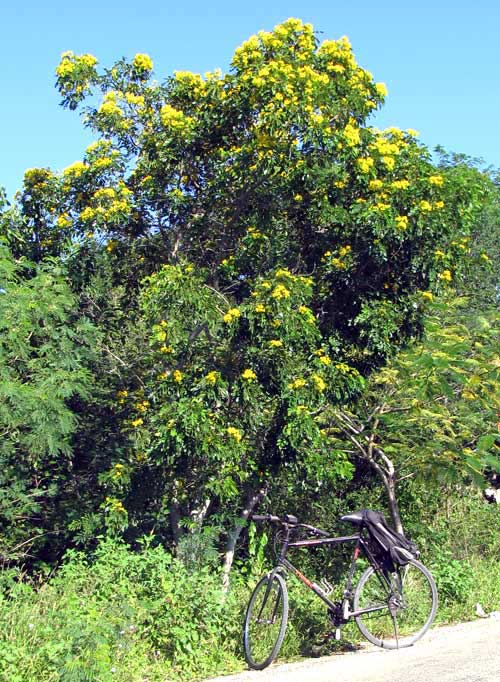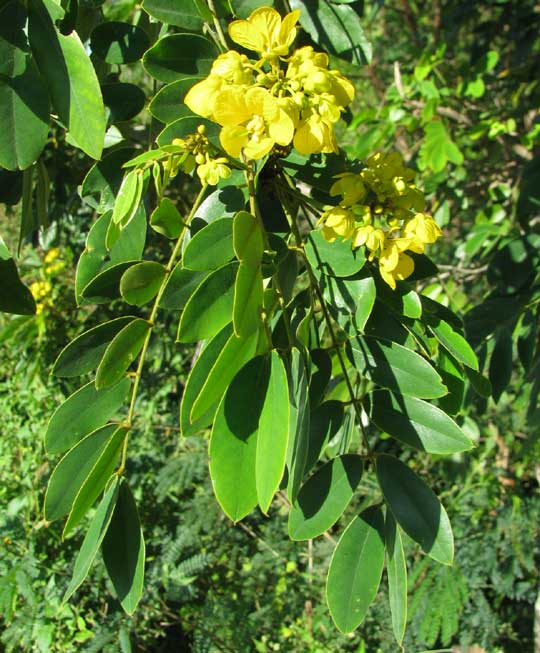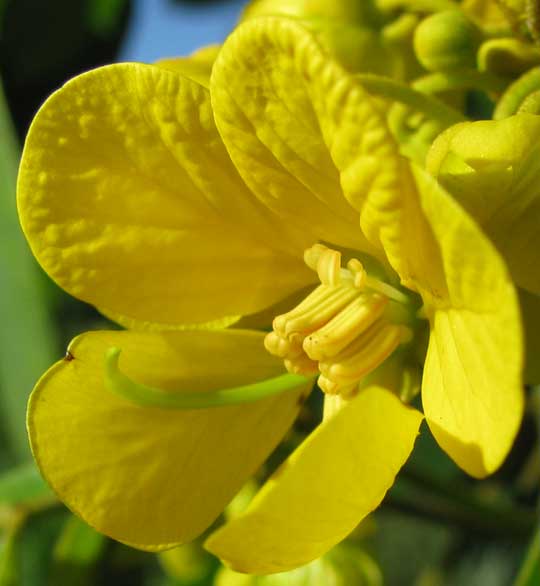Excerpts from Jim Conrad's
Naturalist Newsletter
from the November 21, 2010 Newsletter issued from Hacienda Chichen Resort beside Chichén Itzá Ruins, central Yucatán, MÉXICO; limestone bedrock, elevation ~39m (~128ft), ~N20.676°, ~W88.569°
LIMESTONE SENNA
Here and there nowadays you see a medium-size tree at its flowering peak, splendidly decked out with clusters of yellow, thumbnail-size blossoms. You can see such a tree on the southern outskirts of Pisté, next to the dandy bicycle Don Bruce lent me, below:

Up close it's clear that it's one of many species of the genus Senna, which are members of the Bean Family. The tree shows typical features of the genus -- yellow flowers and pinnately compound leaves, as shown below:

Often we've looked at the "papilionaceous" blossoms of Bean Family species -- meaning that the flowers had a broad top petal, two side petals, and the two bottom petals were united along their sides into boat-shaped "keels," plus the stamens' filaments were fused at their bases, more or less surrounding the ovary. Senna flowers are different, looking like intermediate stages between classical papilionaceous blossoms and "normal" flowers, as shown in the flower close-up below:

The petals are unequal and the flower is asymmetric, but not to the extent of true papilionaceous flowers. The yellow, frankfurter-shaped items are the stamens' pollen producing anthers, but notice that above them lie three or so smaller stamens with much reduced anthers. Those are sterile stamens, which is very typical for Sennas. The long, slender, upward-arching ovary, which will become a long, slender legume, also is typical.
Based on fuzzy pictures of the species on the Internet, and its appearance in lists of plants known to occur here, I'm calling this SENNA RACEMOSA. The USDA names the species Limestone Senna, which concurs with the fact that the Yucatán is basically a big slab of limestone. The species is distributed in the Yucatan, Cuba and here and there in Central America.
The tree is used medicinally in the Yucatán against diarrhea and eye infections. I read that lab tests confirm that compounds from the leaves are antibacterial.